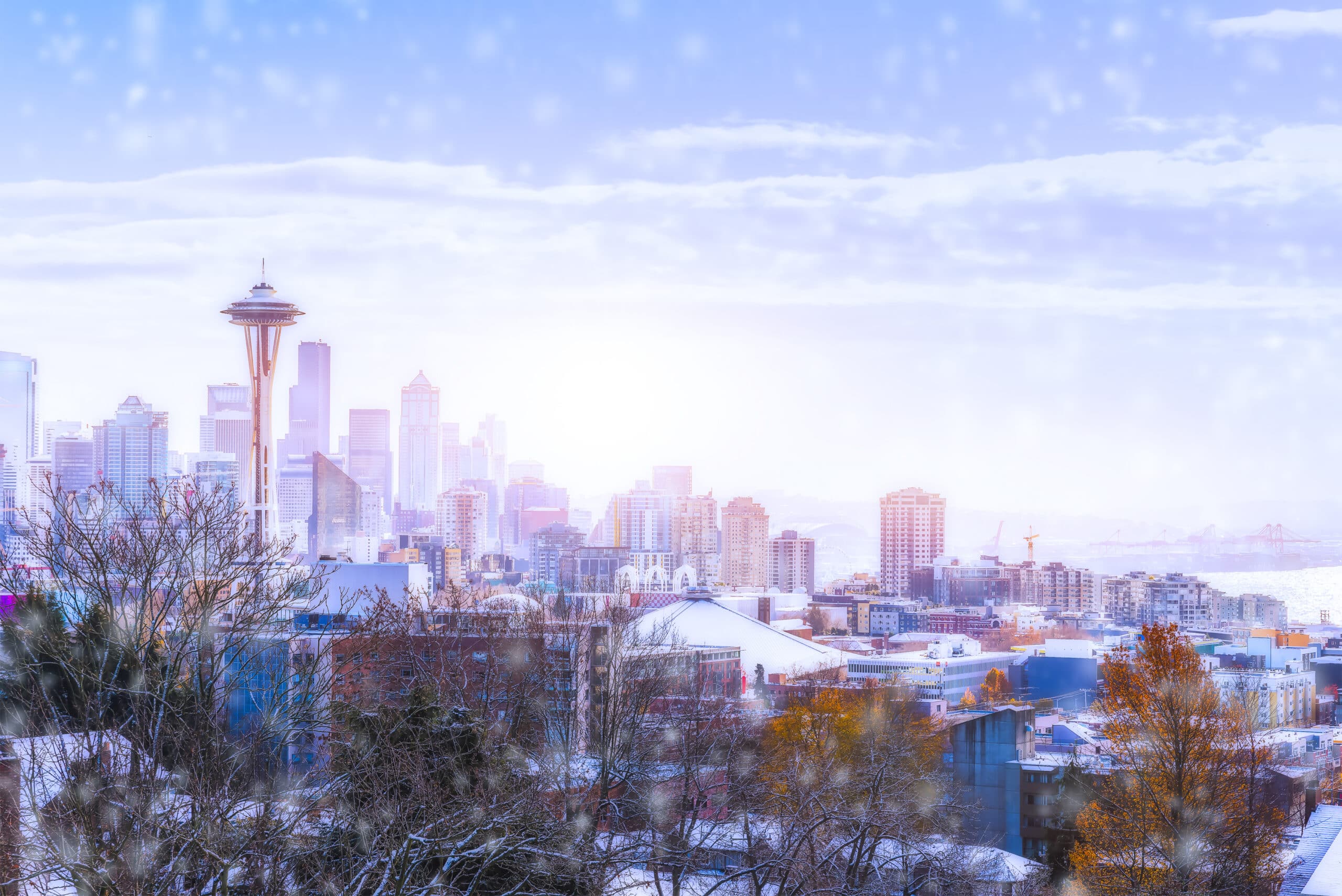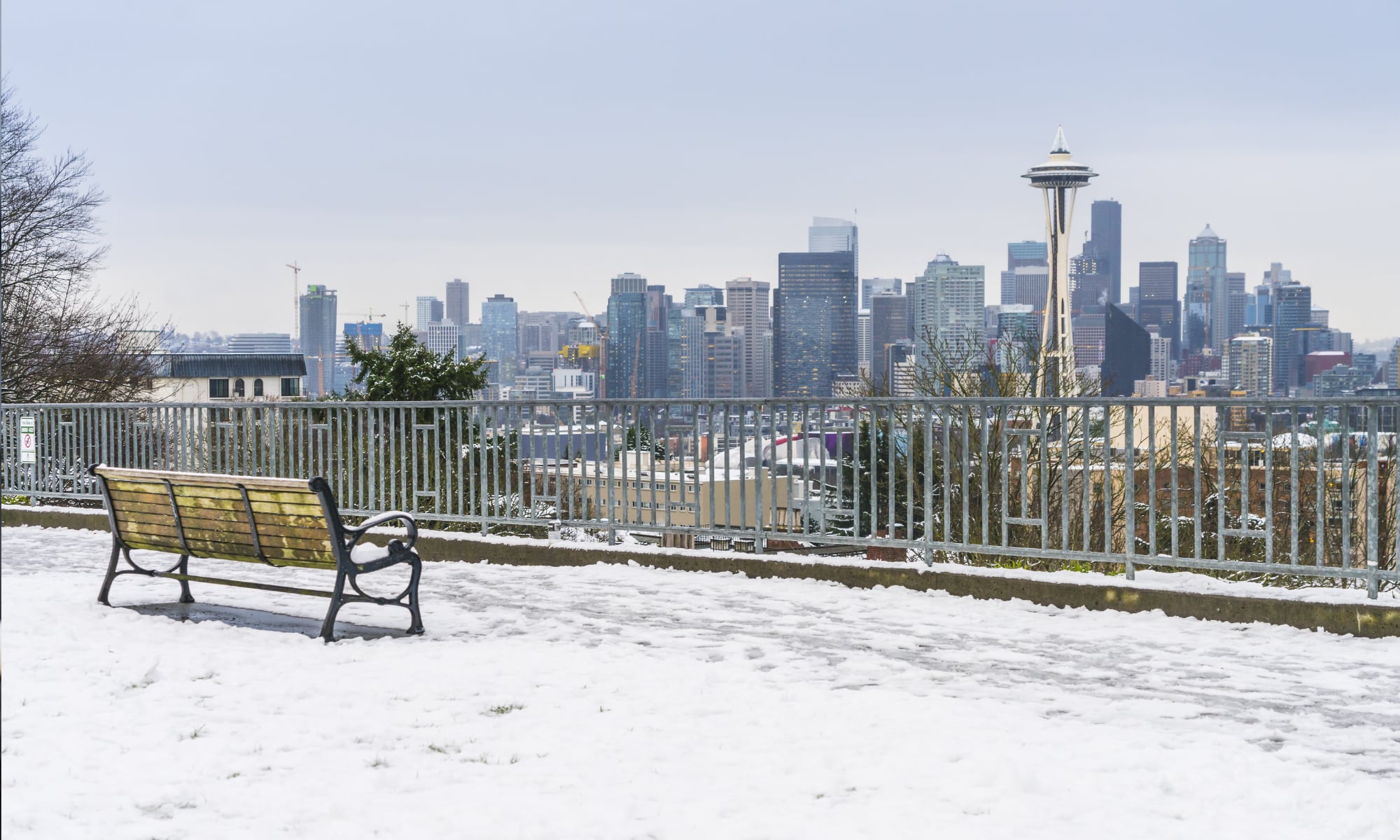Winter is coming. As we turn the calendar to November, the prospect of snowfall becomes real in Seattle. There’s measurable snowfall in November in Seattle about one in every five years. That’s not a ton of snow, but it’s not unprecedented to see large storms in November.
Take 2010 for example, Seattle got 2.5 inches of snow on November 22nd, and the city largely shut down with abandoned cars littering the Interstate and massive delays at Sea-Tac.
Yet, once December hits the real big storms become a possibility. Let’s dig into the biggest snowstorms to ever hit Seattle.
1. The Winter of 1968 to 1969

The winter of 1968-1969 saw an incredible 67.5 inches of snow (measured at Sea-Tac Airport). Several storms passed through. On December 31, 1968, 9.3 inches of snowfall was recorded in a day and then less than a month later on January 27, 1969, the city recorded 14.9 inches.
Seattle historian Paul Dorpat notes that the storms at the time were so extreme that one in every three drivers was “fishtailing” on the Mercer Street exit and hitting guard rails. Meanwhile, the Evergreen Point Floating Bridge was also extremely hazardous and filled with black ice.
2. The Winter of 1949 to 1950

1949 to 1950 came close to the snow record, hitting 63.6 inches in one winter. The biggest snowfall came on January 13, 1950, when 21.4 inches fell (other reports claim 20 inches). However, less than two weeks later the city was socked with another 10 inches on January 26, 1950.
Incredibly, that means that two of the snowiest days since World War 2 happened in just a two-week period. The winter of 1949-50 didn’t just have a lot of snow, it was also the coldest winter on record.
3. Winter of 1880 to 1881
There aren’t official records from this time, but a reported 64 inches fell during the winter season. As you can imagine, building standards weren’t as robust at the time and the winter saw several roofs collapse throughout the city.
The storm caused damage across the Northwest as it cut in from the Oregon Coast and moved inland. Portland saw gusts of up to 70 miles per hour, while Port Townsend reported more than 4 feet of snow accumulation. In Vancouver, Washington it was reported that 25% of trees were blown down by fierce wind gusts and snow drifts.
4. The Winter of 1915 to 1916
The most notable event in the winter of 1616-17 came on February 1, 1916, when a single-day record of 21.5 inches of snow dropped on Seattle. Across two days the total reached 38 inches.
The St. James Cathedral – which we rank as one of Seattle’s Most Famous Buildings – was nearly destroyed in the storm. Its roof collapsed under the intense snowfall.
5. The Winter of 2018-2019

Finally, we end with a snowstorm that became known as “Snowpocalypse” throughout Seattle. The two largest storms of the 21st century came in the winters of 2008-2009 and 2018-2019.
The winter of 2018-2019 saw about 21 inches throughout the winter while 2008-2009 saw 23 inches across the season. We’re adding the winter of 2018-2019 as more extreme because it featured most of its snowfall during February, which became the city’s snowiest month in 50 years.


